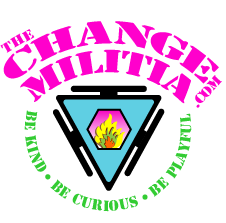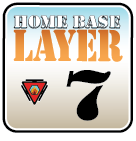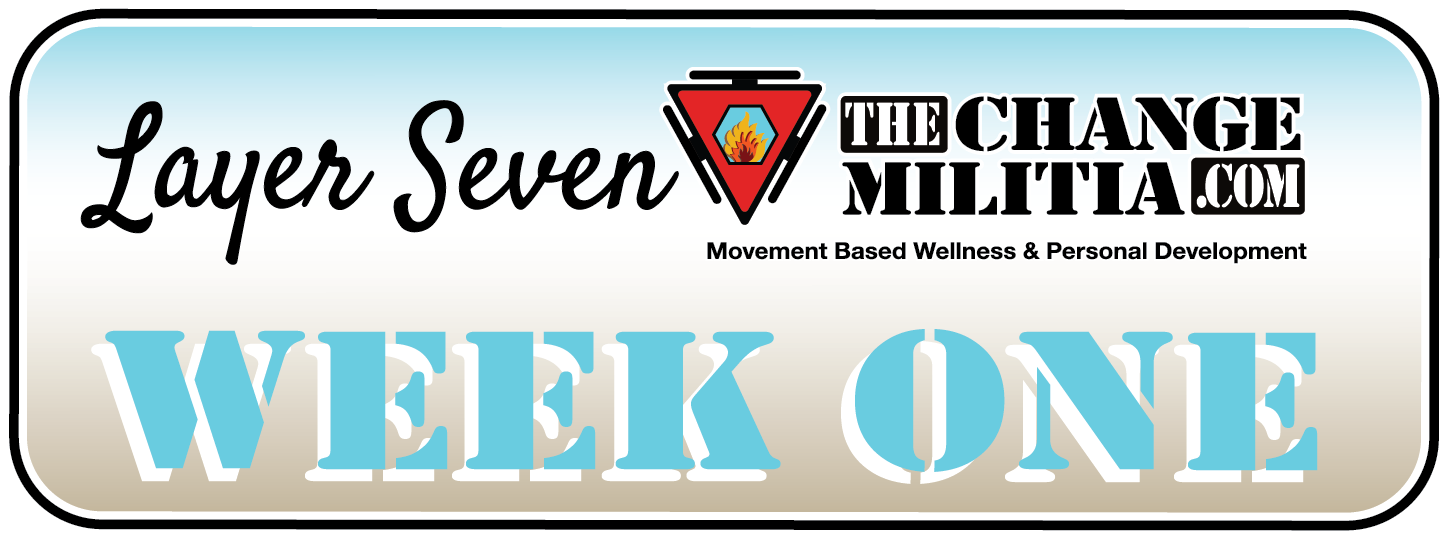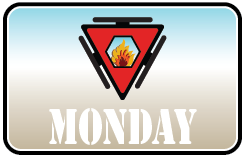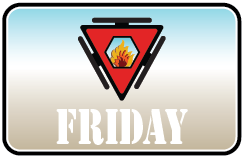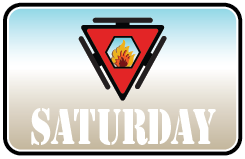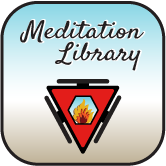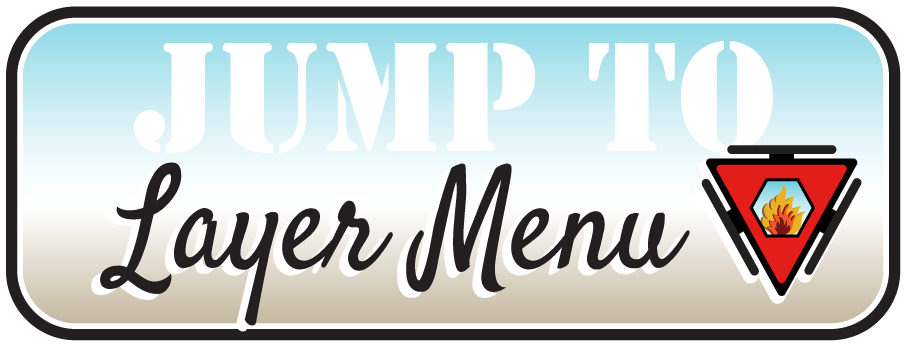Sunday’s Focus:
The practices in Layer Four, Week Three were Filling the Balloon and Leg Swing. Revisit one or both of them and feel for how you experience them differently. If you only have time for one, I suggest Filling the Balloon.
Sunday’s Concepts
As you review, try to somatically connect with the content. Try to feel the sensations of the impact and influence being presented. Sense, in your body, the foundational nature of the content from your current state of being.
This might get intense, if it starts to feel like too much, take it a little slower. Maybe linger for an extra day or two until if feels like you have integrated the material. These are summaries. If you want to review the entire concepts refer to the applicable layer and week.
Layer Four, Week Three – Concepts
The second component of balance is Stability. When you think of stability you might think of something constant, fixed, or unchangeable. The stability we will talk about is being centered, present, and accepting. Stability connects and unifies. Unwavering would be another great description. Accepting and allowing what is without expectation, demand, or judgment. Stability has no sense of entitlement.
How patient are you? Patience is a function of stability. When you aren’t expecting or demanding change, patience happens.
Stability is easiest to identify when it is not present. It is easy to feel when you or someone else is mentally or emotionally unstable. Their energy is frenetic, unpredictable, and usually volatile. Stability is the opposite of that. Stability is cohesive; when you are stable, you can hold it together, not come unglued.
Mental instability comes across as bullying, coercing, manipulating, or pleading. The instability creates a demand for the present moment to be different in some way.
Emotional instability is easy to feel or identify. Some people get outwardly emotional, histrionic; others turn inward and get quiet (like me).
What is your default? When you get emotionally unstable, where does your emotional energy feel like it is? It might be in front, above, beside (“I’m beside myself”), or at any other angle. Highly emotional people generally project their emotional energy in front of them. You might compress it into your body somewhere (low belly, low back, heart, throat, or somewhere in their skull) or scatter it in every direction like a sparkler.
Every aspect of stability has an environmental body component because you are stable in contrast or collaboration to something else.
Third on the list of components is Speed. The primary ingredients in speed are momentum, technique, and purpose.
Speed is essential for dynamic change. The hardest part of any task is getting started, overcoming inertia. Momentum takes inertia out of the picture. You get going and you keep going.
Move fast, think faster! The speed of your mental body must match or exceed the speed of your physical body. To move efficiently you must decide which action is most beneficial and your mental body monitors your technique and its accompanying efficiency. Your conscious mind helps to maintain speed by limiting distractions (obstacles and drag) and helping to keep your frame of reference (intentions and trajectory).
Your emotional body finds balance in speed by allowing momentum (not stopping you when things start to get emotionally intense). Emotional speed happens when you don’t put on your emotional brakes. Once you realize that you have emotional brakes that cause emotional breaks, it becomes much easier to reduce the pressure on the brake pedal, to allow your emotions to flow.
Energetic speed is all about your rate of vibration. Passion, creativity, happiness, and curiosity have a very high vibrational rate. Confusion, insecurity, and boredom have low vibrational rates.
Ever notice how easy it is to go for a run, do the dishes, or start a new project when you are happy, excited, or passionate? Moving energy tends to stay moving. Stagnant energy tends to stay stagnant. Energy moving at any given vibration tends to want to stay at that vibration (Newton’s first law of motion).
Environmental speed is how quickly you can metabolize the energy of your environment. Some of your relationships feel much more effortless than others. Some relationships are efficient because you have let go of your resistance and there is residual momentum that keeps things moving.
Layer Four, Week Three – Focus
Track how present you feel. Can you exist in every moment without fidgeting, getting impatient, or interrupting? How easy is it for you to relax regardless of what is going on around you? Does it seem like your mind, body, and emotions are on the same page?
Watch and assess the people around you. How focused and stable do they seem? Are they alert or distracted? Do they feel relaxed or tense? Do they feel present or like they are somewhere else?
Feel your physical body throughout the day. Feel for focus and stability. A stable and focused body is a relaxed body. Where are you tense? Where does your body hold stress?
Track how mentally focused and stable you are during the day. What does it feel like to feel focused and how does that transition to unfocused? What does mentally unstable feel like?
Feel into your emotional focus and stability. What influences your emotional stability? Do you lose your emotional focus by going into story creation or drama? What degree of emotional expression is okay for you and what degree is okay for others? When do your emotions cause you to lose mental focus?
Monday’s Focus
The practices in Layer Four, Week Four were Third Eye Breathing and Squat Balance. Revisit one or both and feel for how you experience them differently. If you only have time for one, I suggest Squat Balance.
Monday’s Concepts
Layer Four, Week Four – Concepts
Fourth in the list of components is Strength. Strength is the maximum amount of energy you muster against opposing forces. It is how powerfully you can hold or maintain your desired configuration, trajectory, or intention without submission. Strength overcomes resistance. It is the magic ingredient in manifesting freedom and seizing opportunity. Strength is utilization and liberation.
Physical strength requires leadership and collaboration (functionality and communication between structures and tissues). Your system must learn to recruit a higher and higher percentage of your tissues and get them to work together (entrain). The stronger you are, the more you can do at one time without strain. It doesn’t matter how strong you are if you exert just as much energy in an opposing direction. Strength works to overwhelm resistance, but the less resistance you have the more available and usable your strength is.
Physical strength converts very easily to mental and emotional strength. When your body is strong, your mind can pull some of that capacity when needed. When your body is strong, your subconscious mind has less to fear and uses less energy looking for possible threats. Physical strength elevates your energetic strength. Your energy body grows in conjunction with your tissues and blood supplies.
If the physical movements in your everyday life exhaust you, you will have less motivation to think creatively and feel deeply. Physical fitness is one of the easiest ways you can energize and empower yourself to do more, be more, and have a greater impact.
Mental strength is the degree to which you can take conscious action without distraction, diffusion, or dysfunction. How forcefully do you withstand your habits, patterns, beliefs, and fears?
Mental strength is internal leadership.
Mental strength is a measure of your capacity to think. Powerful thinkers think without limits. Want to be a powerful thinker; liberate your mind, remove beliefs that limit you, and maintain your intentions.
Mental strength is a habit you acquire by challenging yourself to constantly improve. You get mentally stronger by taxing your capabilities and overriding the fears of your subconscious mind. You decide to lead yourself in the most beneficial direction.
Emotional strength is how fully you can express your magnificence and display the power of your passions without bullying, coercion, manipulation, or seduction. Intimacy and transparency are powerful examples of emotional strength. Emotional strength is the magic potion against fear. It allows you to feel strongly and still act according to your intentions and trajectory.
Subtle body (energetic) strength is your total capacity and how available it is for use. Your total capacity would be the combined energy in all your bodies. If the energy in your battery isn’t available it is a weakness, an anchor you drag around. Your subtle body distributes energy to your other bodies. The energy in your subtle body is very susceptible to the fears of your subconscious mind. As your fears are triggered, your subtle body contracts and begins to limit or redirect the amount of energy it allocates to the bodies that correspond with the fear. Fear unbalances your subtle body which in turn drags your other bodies out of balance.
Environmental strength is your ability to influence or resist forces (people, things, temptations, distractions) gathering around you. How strongly are you determined to succeed, be kind, make a change, or be happier? How easily are you frightened? Environmental strength is the measure of your instantaneous ability to move in a functional and predetermined direction as you interact with the world.
Layer Four, Week Four – Focus
What feels easy and fluid? Identify where you are fast and strong by their degree of effortlessness and efficiency. Get to know where you flow.
What feels easy and fluid in your physical body? At what activities do you excel? What physical movements feel graceful, elegant, strong, and swift? What are your mental strengths? Where do you think the most quickly and efficiently? What areas of your life are you the most emotionally strong? When do your emotions feel responsive and the most expressive?
What is your general energy level? Your energy level can also be stated as your vibrational rate. The higher you are vibrating, the quicker the energy is moving. The quicker it is moving, the more available it is. Your level of energy availability is measured as strength. Go fast, be strong. When does it feel like you are at your highest vibrational levels? Don’t expect that they will always be positive or happy places.
When do you feel the most alive? Sometimes you will feel the most alive when you are completely dysfunctional. Think of the energy that moves when you are furious, terrified, jealous, or manic. The feelings of energy movement that are attached to non-beneficial states will have a different quality. They will feel frenetic. See if you can begin to discern the difference.
Tuesday’s Focus
The practices in Layer Five, Week One were Third Eye Horse and Rocking Horse. Revisit one or both of them and feel for how you experience them differently. If you only have time for one, I suggest Third Eye Horse.
Tuesday’s Concepts
Layer Five, Week One – Concepts
The list goes on with number five, Flexibility. Flexibility is a willow. The wind blows and the willow just goes on being a willow. It doesn’t fight, complain, resist, or judge. It willows. Can you imagine yourself calmly being the willow or does it bring up anxiety or fear? Do you want to fight the wind, hide from it, or run? How flexible can you allow yourself to be?
Non-opposition, range, elasticity, and non-attachment are the parts of flexibility. Flexibility is your degree of Chill.
Physical flexibility is more than your range of motion and your elasticity. It is your tolerance for discomfort and your ability to tolerate expansion. Healthy physical flexibility is the ability to sense when you are nearing the boundaries of your range of motion and not bullying yourself into injury or limiting yourself because of fear or habit.
You are drawn to things that resonate with your current imbalances.
Mental flexibility is your ability to question and devalue your predispositions, beliefs, and biases. It is being able to feel the pull of distractions without getting distracted.
Emotional flexibility is the skill required to emotionally multi-task. Can you allow yourself to feel multiple emotional states without preference? Can you be happy and frustrated or sad and elated? Can you feel devastating grief and still be incredibly grateful? Sobbing laughter is a great example of emotional flexibility.
Emotional non-opposition is your ability to disregard triggers. Can you exist and be present in your family, work, or relationship dynamics without falling into old patterns? Your emotional range is how much you allow yourself to feel before you react to limit your expression.
Energetic (subtle body) flexibility is the ability to shift energy between your bodies. Psyching yourself up (emotional energy encouragement) before your downhill mountain bike race to supercharge your physical body is an example.
Subtle body flexibility is also how easy it is for you to share a space with someone who is in a completely different energy configuration. People who work in the mental health field have a great deal of energetic flexibility. How little can you be influenced by non-beneficial input from your subconscious mind?
Environmental flexibility is primarily non-attachment and tolerance. Environmental flexibility is the degree to which you exist in a non-judgmental state without labeling or limiting. Can you float through the world unaffected by the drama, projection, expectation, and demand around you?
The range of your environmental flexibility can be felt as your space. How close does someone have to get before you react (get defensive)? Feel into when, who, and how you have felt defensive when someone gets too close to you (invades your personal space). Is it generally a specific sex, age group, ethnicity, or degree of familiarity? Does it depend on the environment? Are you more comfortable existing on a crowded dance floor with a hundred strangers bumping into you than you are with someone sitting too close to you on a bench in a deserted park or sharing a table with someone you don’t know in a restaurant?
Flexibility is water and willow, softness, suppleness, and empathy. More than all the other components, flexibility is empathy. Flexibility is the ability to make lemonade out of submarines.
As a reminder, Balance is when you are the most efficient, strong, and equally fluid in all your bodies and every component. Your success, happiness, and fulfillment flow effortlessly when you are flexible enough to maintain your balance.
Layer Five, Week One – Focus
Think of the relationships in your life right now. Which ones feel like they tax, distract, extinguish, or overwhelm? Which ones amplify, excite, elevate, and inspire?
Which ones feel fluid and which others hard? Go through your relationships and begin to unravel how and why you make things hard and when you allow them to be fluid.
Focus on what your taxing relationships feel like in your body, what labels you attach to them, what emotions are stirred, and how you create limits. Can you feel your desire to create distance when it arises?
Non-taxing relationships: how do you feel around people who inspire and uplift you? What does it feel like in your body? What emotions bubble up? What thoughts, images, and beliefs are ignited? Do you feel a desire to get closer to them? What does that feel like?
Wednesday’s Focus
The practices in Layer Five, Week Two were Panting Horse Breath and Energy Distribution. Revisit one or both and feel for how you experience them differently. If you only have time for one, I suggest Energy Distribution.
Wednesday’s Concepts
Layer Five, Week Two – Concepts
The sixth of the seven balance components is Endurance. Everything you do for more than an instant requires some sort of endurance, from running to sleeping. Every relationship that lasts longer than a minute requires endurance. Ideas would never come to fruition without endurance. Every action, movement, conversation, bodily process, and thought need an on-going energy supply to continue to exist.
Being kind, happy, angry, sad, jealous, fulfilled, loving, and present all require endurance.
Endurance is composed of tolerance for discomfort, efficient movement, collaboration, and essence. Essence is the underlying cosmic signal to continue, pursue, and be curious.
Endurance requires an ability to tolerate discomfort because there is a fear component in every action without a known outcome. You are overruling your subconscious mind’s desire to maintain stasis. To persist, you must tolerate the discomfort that accompanies every fear without stopping.
Physical endurance requires some level of efficiency, both metabolic and movement. Physical endurance requires maintaining efficiency below the aerobic threshold. Your aerobic threshold is the point where you can no longer maintain a movement without something changing. Aerobic movement is when your system can replenish the energy it is expending at nearly the same level that it is burning it.
Mental endurance is how easy it is for you to remain focused. Maintaining focus, mental clarity, and conscious decision-making require endurance. The heart of mental endurance is self-confidence and self-assuredness. As you acknowledge your brilliance and stay present, your endurance will increase because you are not expending a bunch of energy resisting.
Emotional Endurance is your ability to fluidly metabolize the energy in your environment without getting overwhelmed (becoming emotionally anaerobic). Your emotional body is inherently fluid. Your subconscious mind uses that fluidity to instantaneously unbalance you or keep you unbalanced.
Emotional efficiency happens when you can feel the pull of distraction without reacting, maintaining your course.
Emotional endurance as it relates to essence is a very sensory and somatic experience. There is a feeling that you will associate with your essence, an emotional quality partially described by bliss, presence, and grace. Essence feels transcendent … like you are incredibly connected to yourself and indivisible from everything around you. When you are feeling your essence, it feels effortless and if feels like your ability to sustain it is limitless. When you see someone who is glowing, that is the light of their essence.
Environmental endurance is about how little detrimental influence you can allow situations to have. It is about lowering your demands and reducing your resistance.
The most unrecognized aspect of endurance is collaboration. In every moment, instance and interaction, things must work together to continue. Beyond coordinated movement, muscles used in running must be continually restocked with fuel. Conversations require that words work together, thoughts connect, and that both parties continue to participate. Lasting relationships happen when both sides choose to maintain a presence.
Successful endurance also requires the ability to distribute and redistribute energy. Feeling mentally fatigued? Go for a walk, it will rebalance your energy by redistributing some of the energy you generate in your physical body into your mental body. Meditation is so effective is because it allows your systems some time to redistribute energy between your bodies. Endurance is collaboration.
Everything you do for more than an instant requires some sort of endurance. Increasing your endurance is a matter of finding which system or body is lacking and then expending some time, energy, and love to raise the bar. The higher your endurance level, the easier it is going to be to stay balanced.
Layer Five, Week Two – Focus
With every action and interaction, see if you can identify the pieces coming together to ensure continued movement (endurance).
How would you rate your physical endurance? Do you run out of steam before the day is done? How often to you question your physical fitness? Where can you improve?
Emotional endurance? How long can you remain in an uncomfortably intimate space? How long can you remain ecstatic, overtly happy, or filled with anticipation? How uncomfortable do you get around someone who is crying, grieving, or completely triggered?
Mental endurance? How many minutes can you stay focused before you allow yourself to get distracted? How long can you maintain an intention before you start to question it? How would you rate your ability to be persistent?
Social or environmental endurance? How long can you listen to someone you care about talk about something you don’t care about? How well do you play with others and how long can you maintain a high level of collaboration before you begin to disconnect? How long does it take before you are affected by the weather, traffic, noise, or crowds?
Thursday’s Focus
The practices in Layer Five, Week Three were Seated Horse and Energy Distribution – Emotional Balance Revisit one or both. Feel for how you experience them differently. If you only have time for one, my suggestion would be Energy Distribution – Emotional Balance.
Thursday’s Concepts
Layer Five, Week Three – Concepts
The last of the components is Rejuvenation and the most under-recognized aspect of it is opportunity. You revive your energy to the degree your systems can recognize opportunities. To be able to look for opportunities, your bodies must feel safe or be relaxed enough to not be defensive. You also must have some place to put the replacement energy; you need storage capacity.
One of the many reasons fear, judgment, prejudice, and condemnation are so unhealthy is that they severely limit your opportunities to metabolize and interact in a healthy way with your environment.
Holding on to grudges, jealousies, past injuries, grief, regret, and shame will limit your storage capacity. Those things and things like them take up space without providing any benefit.
Energy is released only when an object changes, when its old way of being ceases to exist. You eat an apple and the apple no longer exists as an apple. You and the apple combine to form something new. You are different after you eat an apple. Eating an apple changes you (not to mention what it does to the apple). That old saying “you are what you eat” is an irrefutable truth.
This is easy to understand when it comes to food but the same mechanisms exist when we convert conversation to emotion, emotion to expression, touch to energy, thought to action, love to affection, etc.
You express a feeling and it transforms. As soon as you have a thought, it dissolves or combines into other thoughts. You are different after you eat an apple, pay for your lunch, wave to a stranger, and even when you exhale you change.
Energy is the result of change, either by construction or destruction, birth or death, multiplication, or division. Every action and interaction is an opportunity to collaborate or separate.
Faith is the ability to project some aspect of the future as safe. The more of the future you can project as safe, the easier it is to feel the current moment as safe. The safer you feel in the moment, the greater your capacity to rejuvenate.
Emotional rejuvenation involves the acceptance and welcoming of the sensations you are feeling. Emotions don’t exist until you label them. Before the emotional label, your systems are sensing your environment and that sensing has a set of sensations. Once your subconscious mind assigns a label, your system configures or reconfigures to match your memory of that label. Depending on the label, you will either increase or decrease your ability to rejuvenate.
Emotional labels like confused, exhausted, distrustful, numb, insecure, and disgusted will all decrease your ability to rejuvenate. They are limiting, stagnating, or compressive.
Emotional labels like curious, passionate, joyful, content, enthusiastic, confident, loving, trusting, proud, and secure will increase your capacity for rejuvenation. You open to the possibilities these emotional qualities suggest. They are expansive and allow you to expand into the opportunities around you.
Your environment and the people in it can contribute to your rejuvenation to the degree you accept it and them as safe and beneficial. As we’ve discussed before, there is no bad or negative energy. Energy exists; how you metabolize it is a choice you make. The efficiency in which you receive the world around you determines your capability and capacity to rejuvenate.
The power of acceptance, allowing, tolerance, and welcoming the world in all its colors, flavors, and incarnations can’t be overstated.
That’s it. The explanation of the 7 components of balance is complete. As a reminder, they are focus, stability, speed, strength, flexibility, endurance, and rejuvenation. Each of your 5 bodies (physical, mental, emotional, energetic, and environmental) will be balanced when each of the components is balanced. You will be balanced when each of the components in each of your bodies is balanced with each other.
As you gain and increase your ability to feel the qualities of each of the components in each of your bodies, it will be easier to discern your balances and imbalances. Balanced will feel different than imbalanced. You will be able to feel the transition from balance to imbalance sooner and sooner and then identify the opportunities to take corrective (beneficial) actions.
Layer Five, Week Three – Focus
Identify opportunities for rejuvenation. Opportunities will be anything that has any sort of movement (physical, mental, emotional, or energetic). Classify the opportunities as awesome, acceptable, neutral, mildly offensive, or unacceptable. Feel your response to each and how much energy each is putting out and how much you are allowing yourself to metabolize.
Allow for the possibilities that there are ambient (unseen, unrecognized, and inconceivable) energies swirling around you. Assume there are and open yourself to absorbing them.
Feel your resistance to the energies swirling around you that you classify as negative. Try lowering your resistance to the opportunities you label as negative. What would it feel like to absorb the energy without taking on the negativity?
Friday’s Focus
The practices in Layer Five, Week Four were Recruit and Entrain, and One Less Step. Revisit one or both and feel for how you experience them differently. If you only have time for one, my suggestion would be Recruit and Entrain.
Friday’s Concepts
Layer Five, Week Four – Concepts
As a quick review, centered and balanced exists when the energy in your bodies are equal and when the energy in the seven components of balance are equal (the seven components being focus, stability, speed, strength, flexibility, endurance, and rejuvenation).
Maintaining a fluid, vital, and healthy balance is an incredibly complex and infinitely variable collaboration between energy, bodies, and components. Each body possesses all the components, each body influences the other bodies, and each component affects all the other components.
The takeaway is that everything influences everything else. Changing one changes all.
Balance is challenging because your bodies and components are constantly changing their size, configuration, and momentum. Their influence will also change if they are sharing a trajectory, at non-parallel trajectories, or in opposing trajectories.
Here is something that may seem strange and hard to accept: what you see as your greatest strength is almost certainly your biggest area of imbalance. Here is why: you fall into your strengths because they require the least amount of effort and because they are the most habitual things you do.
Equilibrium (centered balance) happens when you strengthen the weaker links of your chain. Begin by identifying your greatest strengths and then looking for ways to enhance your strengths in the other areas.
When you balance your strengths, several things will happen:
The first is that your stress levels will lower in every area of your life. When you are out of balance, your compensations increase. As one component or body loses balance, it pulls every other body and component out of balance. That imbalance increases the tension and fear throughout your system.
The static level of stress and overwhelm you feel are the result of your imbalances. As you regain balance, stress and tension are naturally reduced. As your systems adapt to being balanced, they adapt to being tension and stress-free.
Second, the stress level of the people around you will decrease because they aren’t being triggered by your imbalance(s). Your imbalances exude fear, tension, and overwhelm. Your demands (that they help you stay balanced) make them defensive. When they are defensive, they increase their static tension (they get ready to fight, flight, or freeze).
Third, your situational awareness will increase. It will be much easier for you to discern the actuality and opportunity of any given situation when you aren’t biased toward the imbalance of your greatest strength. Your strength is a filter with which you see, label, and judge the world. When balanced, filtering isn’t necessary and all that energy is available to increase your presence.
Your second most prominent imbalance is your blind spot; something you ignore, try to not notice or that you label as injured, broken, or insufficient. The relationship, feeling, habit, or appendage that you make excuses for or try to ignore. Each of your bodies and every component will have one or more blind spots.
Here are a few examples.
Physically your blind spot is some nagging injury, cosmetic imperfection, unaddressed weakness, or neglected range of motion. Most nagging injuries persist because they are not given sufficient rehabilitation. You don’t move, massage, treat, rest, stretch, or strengthen them as a priority. The challenge with blind spots in general and nagging injuries specifically is that all the other parts of your life or body must compensate by working harder.
The benefit in identifying your blind spots is that you will begin to be aware of all the opportunities you have been missing. You will also see where you have predetermined (and limited) your future course of actions to avoid the blind spots. You will increase your range of motion, emotion, and conceivability. You will be more readily accepted, admired, and acknowledged. Your influence will grow because others won’t judge you as oblivious to some aspect of their being.
Layer Five, Week Four – Focus
Identify how balanced you feel in any given moment. See if you can feel the interconnectedness of the bodies. Feel for circumstances where one body influences another. A simple example is when you feel emotions in your body (butterflies in your stomach).
Give some consideration to where your greatest strength lies. What are you proud of, where do you excel, and how do you set yourself apart from the crowd? After you have identified your greatest strength, look at the areas at the other end of the spectrum. Which component is your biggest challenge?
Contemplate and identify your most developed component from this list (focus, stability, speed, strength, flexibility, endurance, and rejuvenation). Which of your bodies (physical, mental, emotional, energetic, or environmental) feels the strongest?
Saturday’s Focus
The practices in Layer Six, Week One were Hara Breathing and Center – Off Center. Revisit one or both and feel for how you experience them differently. If you only have time for one, I suggest Hara Breathing.
Saturday’s Concepts
Layer Six, Week One – Concepts
Your third biggest area of imbalance is probably what you see as your greatest weakness but probably not for the reason you think. What you see as your greatest weakness is probably just the thing that works the best to bleed off your excess energy. It is a very effective distraction.
You use your greatest weakness as a scapegoat. You spend a bunch of energy thinking about it, talking, emoting, comparing, judging, hating, remembering past incidents, and projecting future incidents of it.
Every judgment is a subconscious need for distraction.
What you see as your greatest weakness is probably just the thing that works the best to bleed off your excess energy. Reflect on the aspects of your personality that most frustrate, annoy, vex, irritate, embarrass, perplex, or make you the most uncomfortable.
What do you spend the most time and energy pondering, ruminating, or obsessing about? How important is it really? Does it justify the amount of energy you give it?
Is it just a convenient way to create and maintain your distance from others, limit your intimacy and reduce the amount of connection you have? Do you use it to bleed off your excess energy?
Have you ever wondered why you don’t just deal with your greatest weakness? Your greatest weakness is manageable. The reason you chose it wasn’t because it was the most grievous but because you could worry about it without fear of overwhelm.
However grievous or heinous you feel your weakness to be, ask yourself how much it has changed in the recent past. You deal with it daily, like brushing your teeth or tying your shoes. It persists because it (however unpleasant, unproductive, or unkind) is tolerable. Your subconscious mind finds it a handy punching bag.
The first step in achieving balance is determining what your baseline is. Find what is working for you and be honest in your assessment of what needs improvement.
Why doesn’t your system default to balanced and fluid? Your sub-conscious mind is the primary culprit. Both fluid and balanced lead to growth, growth requires change, and your subconscious mind does not like change. So, it sabotages your balance and hinders your fluidity to keep you in a familiar place.
Simply put, your subconscious mind is concerned with two things: threat assessment and homeostasis.
Homeostasis has a lot of beneficial attributes. It keeps your blood oxygenated to a healthy level, controls your heartbeat, respiration, and blood sugar, and replenishes energy to the cells. It is not concerned with growth or optimal effectiveness; it is seeking average, comfortable, and safe.
Your subconscious mind co-opts homeostasis to keep you thinking and emoting in a familiar and narrow range.
So, to achieve fluid balance, you will parent your subconscious mind with your conscious mind. You will direct and train, override and decide, and determine the path that leads to long-term growth, health, happiness, fulfillment, and success.
Layer Six, Week One – Focus
Examine the people you know best and see if you can identify their blind spot. You are looking for the thing they do or neglect that has the biggest non-beneficial impact on their lives (no matter what, keep your observations to yourself).
Find your blind spot Be open to something obvious that you disregard and to something you repress.
Spend the day cataloging your distractions. When you catch yourself in distraction, label the distraction as either greatest strength, greatest weakness, or blind spot. Review Layer Five, Weeks Three and Four, if necessary.
When you have dissected your greatest weakness, spend some time feeling what your life would be like if you didn’t fixate or value that weakness. How much more time and energy would you have for other, fun, fulfilling, and productive things?
Here is a way to suss out your current imbalances. Make a list of the seven components and beside each one list each of the 5 bodies. Go through and give each of the thirty-five options a number from 1-10 with one being the most unbalanced. Follow this model.
Spend the day reviewing your list. Verify that you were being as forthright as possible and adjust it as necessary. Highlight the lowest numbers and reflect on your options to improve.
